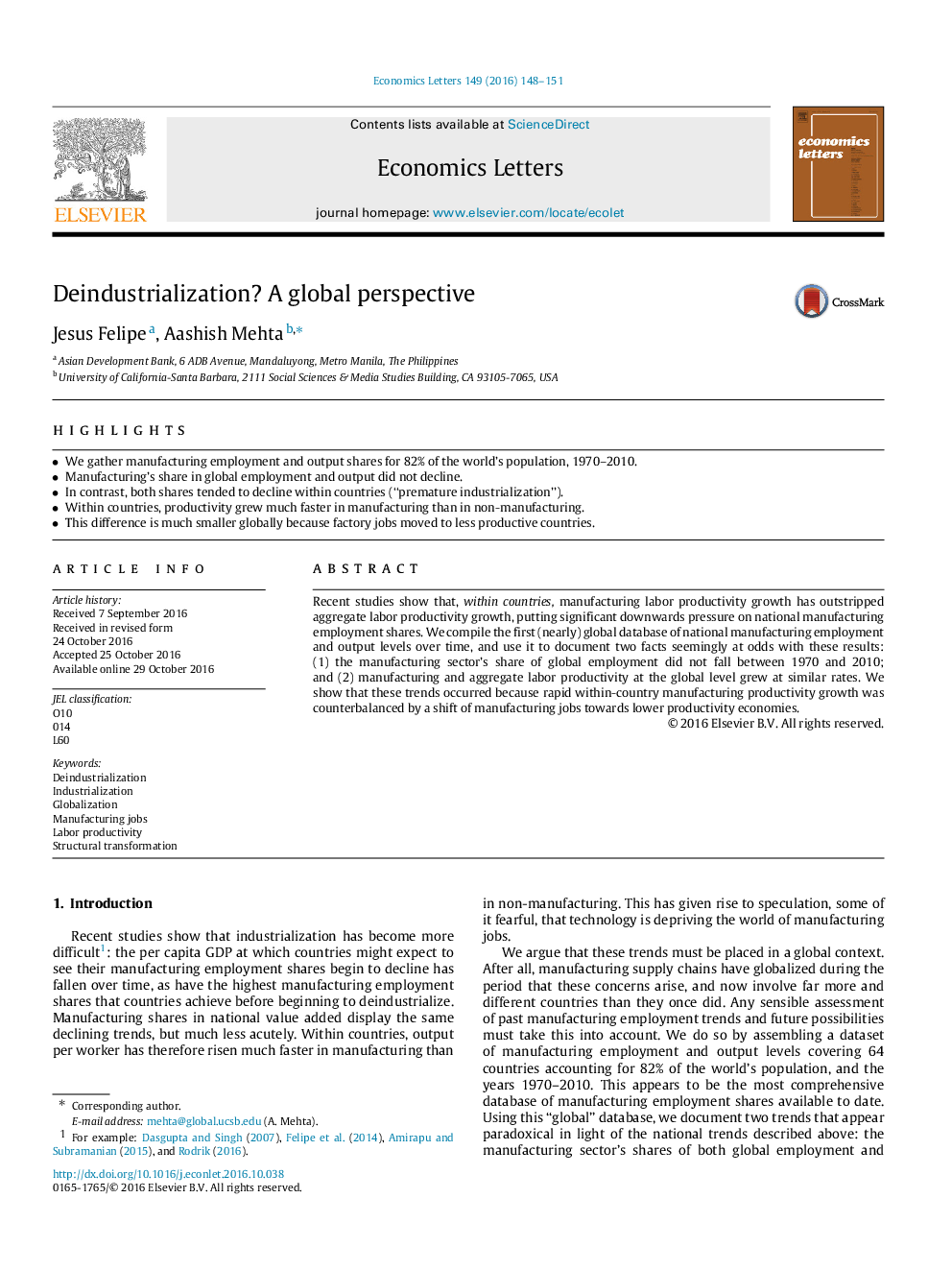| Article ID | Journal | Published Year | Pages | File Type |
|---|---|---|---|---|
| 5057968 | Economics Letters | 2016 | 4 Pages |
â¢We gather manufacturing employment and output shares for 82% of the world's population, 1970-2010.â¢Manufacturing's share in global employment and output did not decline.â¢In contrast, both shares tended to decline within countries (“premature industrialization”).â¢Within countries, productivity grew much faster in manufacturing than in non-manufacturing.â¢This difference is much smaller globally because factory jobs moved to less productive countries.
Recent studies show that, within countries, manufacturing labor productivity growth has outstripped aggregate labor productivity growth, putting significant downwards pressure on national manufacturing employment shares. We compile the first (nearly) global database of national manufacturing employment and output levels over time, and use it to document two facts seemingly at odds with these results: (1) the manufacturing sector's share of global employment did not fall between 1970 and 2010; and (2) manufacturing and aggregate labor productivity at the global level grew at similar rates. We show that these trends occurred because rapid within-country manufacturing productivity growth was counterbalanced by a shift of manufacturing jobs towards lower productivity economies.
